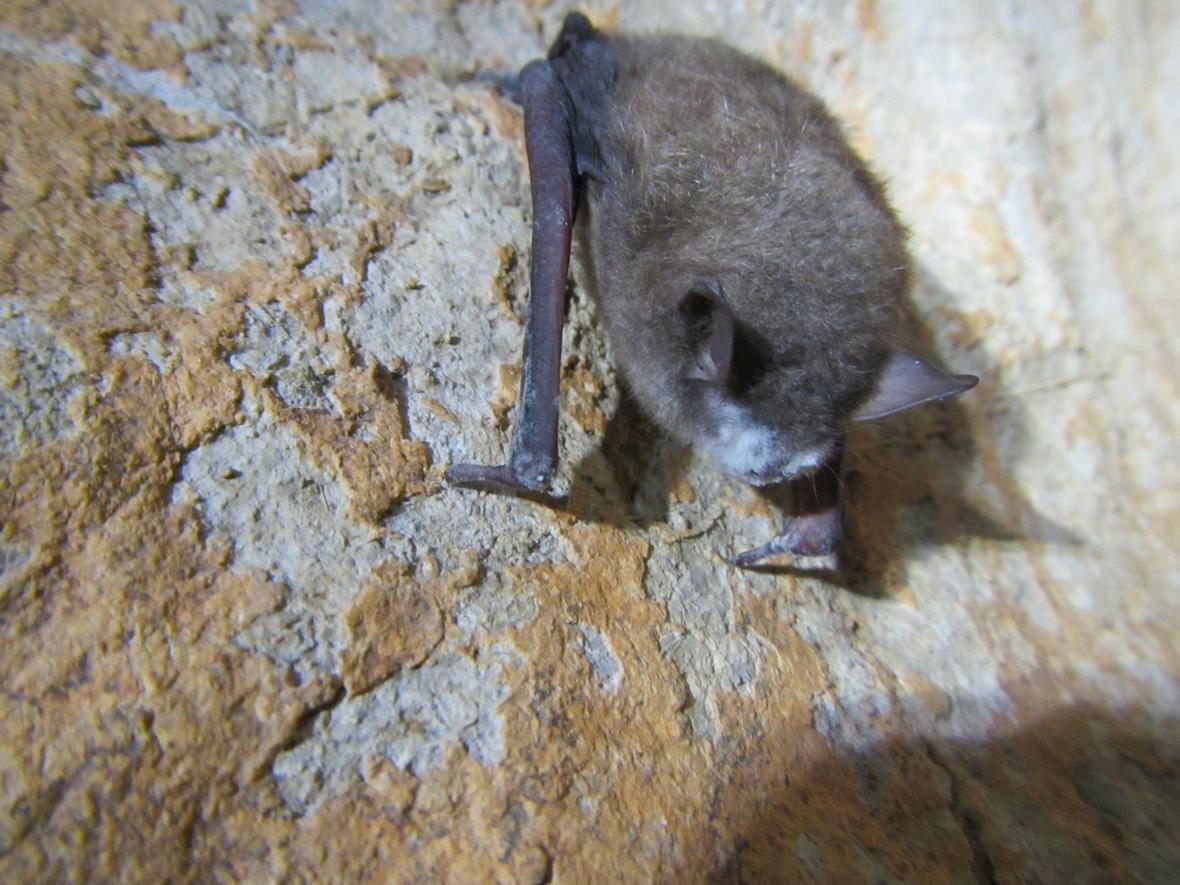
The infected southeastern bat was found in a cave in Shelby County, and is the first member of its species (Myotis austroriparius) confirmed to have white-nose syndrome and the first infected bat of any species found in Shelby County. A USGS lab confirmed the test results this week.
White-nose is caused by a fungus, Pseudogymnoascus destructans or Pd, and spreads easily among hibernating bats in winter. The disease causes a distinctive white fungus to appear on infected bats, often around the muzzle. Infected bats often display unusual behavior, sometimes flying outside during daylight hours or clustering near the entrances of their caves in winter.
The disease has killed millions of bats across the U.S. and Canada, and in some infected areas has killed 90 to 100 percent of the bats that lived there.
"We are disappointed to find white-nose syndrome in another species, but hopeful that the southeastern bat may fare better than many of its more northern cousins based on how long it took to be diagnosed with the disease," said Jeremy Coleman, national WNS coordinator for the U.S. Fish and Wildlife Service. "This discovery, along with the continued spread of Pd this year, reinforces the need for our continued vigilance in the face of white-nose syndrome."



Reader Comments
to our Newsletter